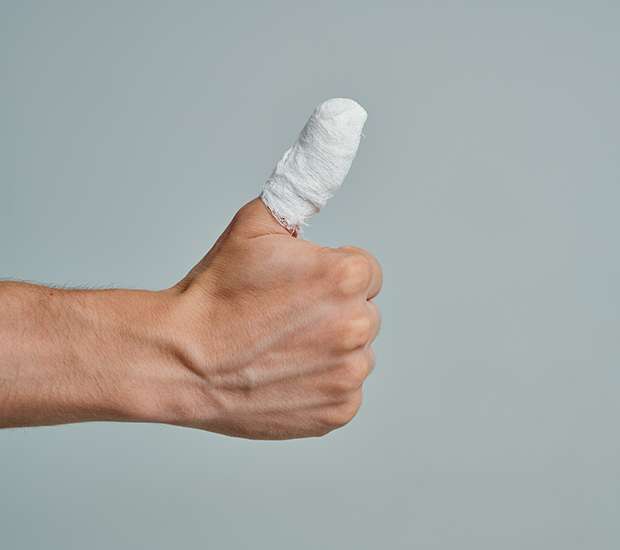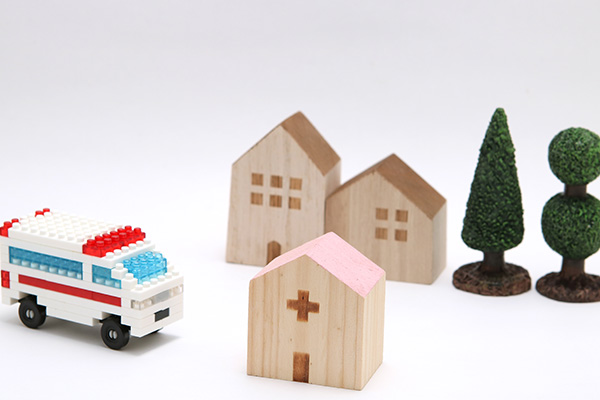Cuts and Bruises TreatmentCorona, CA
It is essential to know how to properly treat a cut or bruise initially as the failure to do so can lead to an infection or severe, unnecessary pain lasting for an extended amount of time. At our urgent care facility, we can treat any mild to moderate cut or bruise effectively and efficiently, so you can get back to being pain-free in no time.
While certain minor scrapes, cuts, and bruises can be appropriately treated at home, more severe cuts or bruises may require medical assistance to ensure safe treatment procedures and a speedy recovery.
Specific precautionary measures should be implemented to help prevent minor cuts and bruises from occurring in the first place, although they are not always avoidable and minor cuts and bruises are merely a part of life. Subsequently, it is essential to know how to deal with a cut or bruise in the event one does occur.
If you or your child endure a cut or a bruise that is concerning, be sure to come in and visit us, and we can ensure you or your child receives the proper care needed to prevent more serious issues from developing and to recover promptly.

When to Seek Urgent Care for a Cut or Bruise
It can be challenging to determine the severity of your cut or bruise, and there various levels of severity depending on how deep the cut or bruise is and where it occurred. While a less severe cut or bruise can be treated at home with little to no medical assistance, a more serious cut or bruise may require a trip to see us at our urgent care facility. In the event the cut or bruise is life-threatening, and surgery and other advanced treatment options are needed, it is best to visit an emergency room with facilities to have surgery if the doctor deems it necessary.
For minor cuts, scrapes and bruises that do not pose any long-term health risks can be treated at home by adequately cleaning and bandaging the wound if it is a cut and applying the RICE method if it is a bruise.
However, a more painful cut or bruise that poses the risk of an infection or a possible broken bone or deep bone bruise needs to be examined by a medical professional. If this is the case, or there is any doubt over the severity level of the injury whatsoever, be sure to come into our urgent care facility and allow us to diagnose and treat the cut or bruise properly. By doing so, you can ensure that the wound or bruise does not pose any long-term health risks that could result due to poor treatment.
Lastly, any cut or bruise that is considered life-threatening, such as a stab wound or getting hit by a moving vehicle, should be attended to at an emergency room as there may be a need for surgery or other more advanced treatment options that urgent care is not able to provide. If there is any doubt, do not hesitate to give us a call for additional guidance.
Treatment Methods for a Cut or Bruise
If you suffer a cut or a bruise that concerns you, be sure to come by our urgent care facility for proper treatment. After stopping any bleeding and cleaning any wounds, we will evaluate the extent of the injury and correctly diagnose the injury. Frequently an accurate diagnosis can be given by merely examining the injury and documenting the causes and the symptoms of the cut or bruise. After adequately diagnosing the extent of the wound or bruise, we can then decide upon the best form of treatment.
For minor cuts, often the best form of treatment is to keep the wound clean and bandaged to avoid any infections. With the right home care treatment, the injury should be able to heal up within a week or two, and the pain should go away as well. For more serious, deeper cuts, stitches may be necessary to ensure the skin heals back correctly.
Bruises are often much more difficult to treat as every bruise is different. However, in most instances, the best form of treatment for an injury is to reduce the swelling however possible. The best way to do this is to continually apply ice and avoid putting pressure on the affected area until the swelling and discoloration are gone. In some cases, a bruise may benefit from the application of heat as well as ice.
For both cuts and bruises, there is likely to be a fair amount of pain that exists. Due to this, there is a good chance that pain relief medication may be needed to cope with the pain until the symptoms go away. With bruises, anti-inflammatory medicine can also help reduce the amount of swelling that exists. In most cases, it should only take a week or two to recover from a mild to moderate cut or bruise.
Start Feeling Better – Visit Us Today
By visiting us as soon as possible, our team can help get you the professional treatment you need. Instead of waiting around and allowing the symptoms to get worse, we can provide you with stronger medication and treatment options instead of ineffective store-bought products.
How to Treat Minor Cuts and Bruises at Home
Since minor cuts and bruises are merely a part of life and cannot always be avoided, it is essential to know how to treat a small cut or a minor bruise at home to ensure proper treatment is administered initially.
In many cases, at home treatment for a minor cut can be done by following these three steps:
- Rinse the cut out with water
- Wash and remove dirt around the cut
- Cover the cut with a bandage
It is important to properly clean the wound as soon as possible to avoid an infection resulting from the cut. In the event the cut is large, be sure to come in and let us help you with long-term treatment after you care for the cut initially. If the cut is small and does not cause much pain or bleeding, then you may be able to give it some time and see if the cut heals on its own as long as you keep the wound clean while doing so.
For bruises, the treatment procedure is much different:
- Apply ice
- Elevate the affected area
- Take anti-inflammatory medication
In the event your bruise is minor and does not require immediate medical attention, you can keep the pain at a tolerable level and prevent the symptoms from worsening by following the above process. Another at home treatment option for a bruise is to use the RICE method, which is arguably much easier to remember. The RICE method stands for rest, ice, compression and elevation. By resting the affected area, applying ice, placing compression on the area and elevating the bruise, you should be able to reduce the symptoms until a full recovery is made.
While home treatment works for minor cuts and bruises, it is essential to seek medical assistance for deeper cuts and more severe injuries.
Prevention Tips for a Cut or Bruise
Although cuts and bruises are merely a part of life for adults and children alike, there are specific precautionary measures you can take to limit the chance of you or your child suffering a cut or becoming bruised by an avoidable incident. Along with the tips mentioned below, be sure to educate yourself as much as possible on how to prevent a cut or bruise and discuss the information with your children to ensure they are careful as well.
To try and prevent unnecessary cuts or bruises, try making the following changes:
- Make your home safer
- Practice knife safety
- Take extra caution for children
Make your home safer
First and foremost, be sure to make your home safer however you possibly can. Many bruises occur as a result of stumbling and falling over misplaced house items. Therefore, be sure to keep your home neat and well organized, which helps prevent falls. Additionally, be sure to make any necessary home repairs, including a loose stairwell, a hole in the floor and potholes in the driveway.
Practice knife safety
One of the leading causes of minor cuts is the improper use and storage of kitchen knives. While it may seem more dangerous, using sharper knives is an excellent way to prevent cuts as they require less effort to cut. Additionally, be sure to store the kitchen knives properly. Instead of placing blades in a drawer, which is not good for the knives or your fingers, be sure to store them in a knife holder.
Take extra caution for children
Lastly, be sure to keep a close eye on your children as they are at an increased risk of suffering a cut or bruise, especially if they spend a lot of time outside. Be sure to discuss with them the safety measures they can take when playing, and keep a close eye on them if they are outside. Also, keep sharp objects, such as knives and construction tools, out of reach.
Questions to Ask Your Urgent Care Provider
- Will my cut require stitches or can my skin heal on its own?
- How deep is my cut?
- What measures can I take to prevent getting an infection due to my cut?
- Is there a way to make my bruises go away quickly?
- Can I do anything to speed up the recovery time while I recover from my cut or bruise?
- What pain relief medications are okay to take while I recover? What is the recommended dosage?
- What treatment options are available for my cut or bruise?
- Will my child need a tetanus shot now that he or she suffered a cut?
- Should I schedule a follow-up appointment with a specialist?
- How are you able to determine the difference between a minor cut or scrape and a more serious cut or scrape?
- What preventive measures can I take to ensure I do not suffer a skin injury in the future?
- The cut is the result of our pet. What all needs to be done to prevent an infection?
Consult With Us
To ensure your cut or bruise is treated correctly, it is essential to know the difference between a minor cut or bruise and a more severe cut or bruise, know the correct way to handle a minor cut or bruise at home and where to go if your cut or bruise is deep and painful.
Without proper treatment, you run the risk of having your cut become infected or the symptoms of your bruise becoming more severe and not being able to heal properly. Subsequently, it is essential to seek medical assistance in the event a cut or bruise leads to serious symptoms or the symptoms do not go away within a week.
While prevention is the best strategy for dealing with a cut or bruise, it is not always avoidable, which is why it is essential to know the proper steps to take in the event you do suffer a cut or bruise.
At our urgent care facility, we have the staff and resources available to deal with minor to moderate cuts and bruises efficiently and effectively. Therefore, be sure to consult with us if there is any concern over the pain level or severity of your cut or bruise.
Check out what others are saying about our urgent care services on Yelp: Cuts and Bruises Treatment Corona
FAQ
My child suffered a deep cut. What are all treatment options available to close a cut?
In the event you or your child suffers a deep cut, the first thing to do is seek medical attention as you likely are not able to properly treat the wound with home remedies. Once at an urgent care center or emergency room, there are several treatment options your healthcare provider is likely to choose. First and most commonly, your child may receive stitches to close the wound. For smaller cuts that are still not able to heal on their own, steri-strips, skin glue or staples may be applied to help the cut close correctly.
How long should it take for my cut to heal? What do I do if it doesn’t heal after an extended amount of time?
It depends on how deep the cut is. Minor scrapes and cuts should heal within a week. For thicker cuts, it can take as many as two to three weeks to recover. However, there should always be a noticeable improvement of the scar throughout the process. If your cut does not show any signs of beginning to heal or is still problematic after two weeks, be sure to come in for a visit to ensure the scar does not need medical attention. In the event your cut is not able to close properly on its own, we may use stitches or other techniques to help the skin close.
I seem to bruise much more easily than other people. Am I doing something wrong to cause the excessive bruising?
There are various reasons why one may bruise more than others. In most cases, excessive bruising for no apparent cause happens due to a lack of platelets in your blood. There is usually a cause for the lack of platelets, such as certain medications that are being taken, a lack of proper nutrients or while infected with a virus. In the event you have constant bruising without a known cause, be sure to come in for a visit and allow us to help you find out why the excessive bruising occurs.
How long does a bruise typically last? Should I be concerned that something more is wrong if it does not heal quickly?
A bruise should only last for several weeks at most. If a bruise does not show any signs of improvement, lasts for several weeks or is accompanied by other concerning symptoms, be sure to visit us at our urgent care facility for proper, prompt diagnosis and treatment, especially if the bruise is not the result of a physical injury.
Questions Answered on This Page
Q. When should I seek professional treatment?
Q. What should I do for minor cuts and bruises?
Q. How can I prevent the chance of a cut or bruise in my home?
People Also Ask
Q. What are the possible treatment options for an auto accident injury?
Q. What are the types of reactions to insect bites?
Q. What are common skin conditions that I need to watch out for?
Facts from NDH Health Facts
- Scrapes and minor cuts are the most common injury to children.
- The color of a bruise is blood gathering under your skin.
- As you age, you may begin to bruise more often.
- Although most bruises heal on their own, they sometimes require emergency medical assistance.
- Skin is the body’s largest organ and plays a significant role in keeping you healthy.
- Your skin serves as an alert system to your body, warning of potential problems when you feel heat or pain.
- Skin helps to regulate body temperature and serves as a barrier to help prevent infections.
- More people are prone to bruising than others.
Definition of Terminology
- Anti-inflammatory
- A treatment option used to reduce inflammation. Anti-inflammatory medications are often used to treat bruising, especially bruises caused by a physical injury.
- Blood clot
- The act of blood turning from a liquid to a gel, which can cause severe medical complications. Blood clots can form from bruises, which is why proper bruise treatment is important.
- Blood thinners
- A form of medication that helps treat and prevent blood clots from occurring. In some instances, blood thinners are prescribed to deal with bruising.
- Bruising
- A skin injury that often results due to trauma, although it can occur for many different reasons. Blood gathers underneath the skin after a bruise, which causes the discoloration of the skin.
- Ecchymosis
- A term used to describe a discoloration of the skin, which is typically caused by bleeding underneath the surface of the skin often due to bruising.
- Gash
- A deep cut or slash into the skin, which generally causes bleeding and can be painful. A gash into the skin requires prompt treatment as there is an increased risk of infection due to the open skin.
- Infection
- A term used to describe when a bacteria, virus or other harmful substance enters the body. An infection can develop when a cut is not adequately treated, leaving the skin open and vulnerable.
- Laceration
- A deep cut that leads to the opening of the skin, which often leads to bleeding and severe pain. A laceration requires prompt treatment to limit the risk of infection.
- Nervous system
- The group of nerves and fibers inside the body that transmit nerve signals is referred to as the nervous system. A deeper cut into the skin can cause nerve damage.
- Skin avulsion
- A term used to describe the tearing away of a patch of skin. A skin avulsion can occur as a result of various cuts and body trauma. It often needs medical assistance to repair.
Back to top of Cuts and Bruises Treatment




